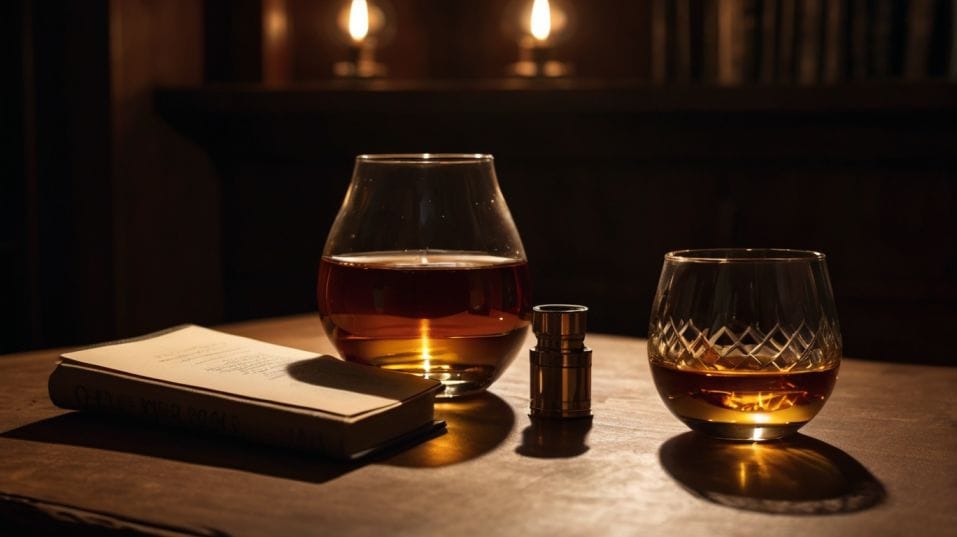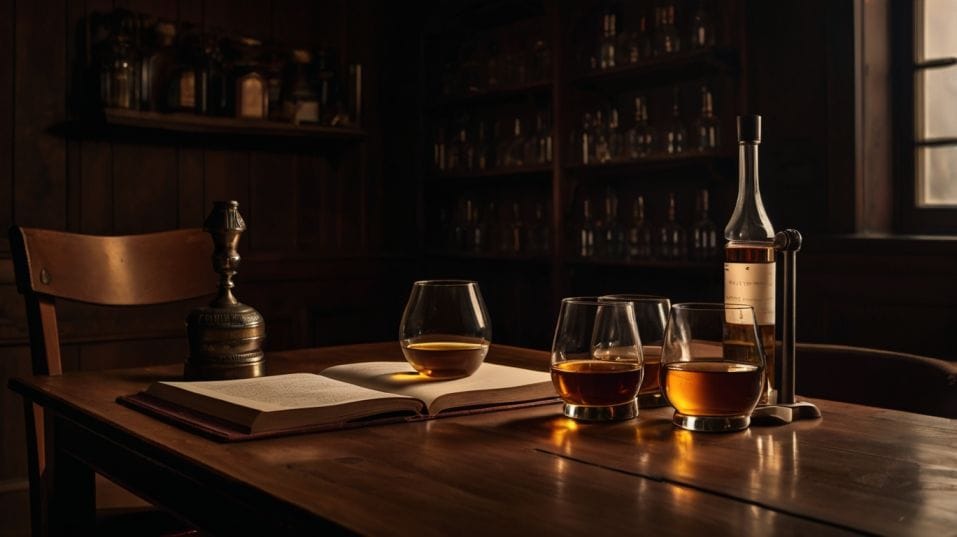5 Tools Every Whiskey Drinker Should Own
Level up your whiskey game with 5 must-have tools to taste better, collect smarter, and enjoy each pour with confidence and clarity.

Ever wonder why some whiskeys seem flat while others explode with flavor? It’s not just the bottle—it’s the tools behind the pour.
If you're early in your whiskey journey, investing in the right gear sharpens your palate and deepens your experience fast. No fluff. Just function.
The goal? Taste with clarity, collect with purpose, and build confidence sip by sip. Here's what every whiskey-curious drinker needs to get there.
A Proper Glencairn or Tasting Glass
Let’s kill the myth: heavy rocks glasses are for cocktails, not tasting. If you’re pouring something neat and want to actually understand it, you need a glass designed for flavor—not drama.
Enter the Glencairn, the copita, or any well-shaped nosing glass that channels aroma and guides the sip.
These glasses concentrate the nose at the rim. They let ethanol settle and allow aromas—vanilla, smoke, citrus, spice—to surface cleanly.
That first swirl becomes more than habit; it’s functional. You’ll start to pick up notes you used to miss entirely. Nutmeg hiding under sherry. Earthy peat beneath a layer of honey.
Good glassware doesn’t just elevate what’s in the glass—it elevates you. Your awareness, your vocabulary, your memory of what a great whiskey actually feels like.
Get a few. Rinse them properly. Use them often. Over time, your palate will sharpen just by slowing down and tasting through the right lens.

A Whiskey Journal (Yes, an Actual One)
You won’t remember what made that single barrel rye stand out two months from now. You won’t recall why one Highland scotch landed flat while another seemed explosive. Memory fades. Tasting notes don't.
A proper whiskey journal turns your casual sipping into real learning. You’re not writing poetry—you’re training your palate. Jot down the nose, palate, and finish.
Record the proof, age, cask type, and region. Even the setting matters: were you relaxed, rushed, eating something spicy? Whiskey isn’t static—it reacts to your context.
Over time, this becomes your personal whiskey database. Patterns emerge. You realize you lean toward oloroso-aged malts or prefer rye with a certain mash bill. Instead of buying blindly, you start hunting with precision.
A physical journal creates ritual. It makes tasting deliberate, not passive. If you treat whiskey like something worth remembering, you’ll get more out of every pour.
And when someone asks what you think about that rare release? You’ll have more than a guess—you’ll have data.
A Precision Water Dropper
One drop. That’s the difference between a whiskey tasting closed and tight versus one that blooms open with fruit, florals, or spice.
But most people dump in water casually, wrecking structure and balance. A precision water dropper—think glass pipette or fine-point spout—gives you control.
Especially with cask strength whiskey, a few drops can cut the heat and expose complexity. But it’s not just about taming alcohol.
Water chemically unlocks aromatic compounds—esters, phenols, aldehydes—that were trapped behind that high ABV wall. With the right pour and a little patience, a whiskey can unfold like a story in chapters.
Practice with intention. Add one drop, swirl, sniff. Taste. Then add another. Learn where the balance sits for your palate.
You’ll be shocked at how many layers are hiding just under the surface of a tight pour. A dropper doesn’t just help you dilute—it helps you discover.
An Ice Mold That Doesn’t Suck
Ice gets a bad rap in whiskey circles, mostly because people use the wrong kind. Small, fast-melting cubes waterlog your pour and kill nuance. That’s not refinement—that’s sabotage.
What you want is large-format, slow-melting, clear ice. Spheres or cubes made with directional-freezing molds melt slower and more predictably.
They chill your whiskey without obliterating it. This matters not just for comfort but for pacing—giving you time to taste the whiskey as it evolves, rather than dumping it into a cold, flavorless mess.
Clear ice also looks better. It respects the pour. It says you care about how it drinks—not just how it looks. And when you’re dealing with a spicy bourbon or a hot rye, sometimes a little chill is all it takes to round the edges.
Use ice when it fits the mood. But when you do, make it quality. Anything less is just lazy.
A Reliable Digital Thermometer
Most drinkers ignore temperature. And most drinkers miss what their whiskey is really trying to say.
Temperature shapes everything: aroma intensity, alcohol perception, mouthfeel, and finish. Too cold and the whiskey tightens up—dulling the nose and flattening the palate. Too warm and it turns sharp, boozy, and imbalanced.
A simple digital thermometer takes the guesswork out and helps you hit the sweet spot—usually between 60–65°F (15–18°C), depending on style.
You don’t need to obsess. But early on, it’s a game-changer. You’ll start to notice when a whiskey feels off, not because of the spirit itself—but because of how it’s served. That awareness separates casual drinkers from those who really understand their glass.
Eventually, you won’t need the tool. You’ll feel it by touch, smell it in the air, know it by instinct. But to get there, you’ve got to train with precision. A thermometer isn’t for the fussy—it’s for the focused.
Final Thoughts
None of these tools are about luxury. They’re about respect—for the whiskey, for your palate, and for the time you’re putting into this pursuit.
Good gear doesn’t make you a whiskey expert. But it does make you a better taster, a smarter collector, and a more confident drinker.
So don’t just read about this—act on it. Pick one of these tools and integrate it into your next pour. Journal what you taste. Add a drop of water and pay attention. Try your favorite bottle at two different temperatures and feel the shift.
Taste with intention. Build your setup like it matters—because if you’re reading this, it already does.




